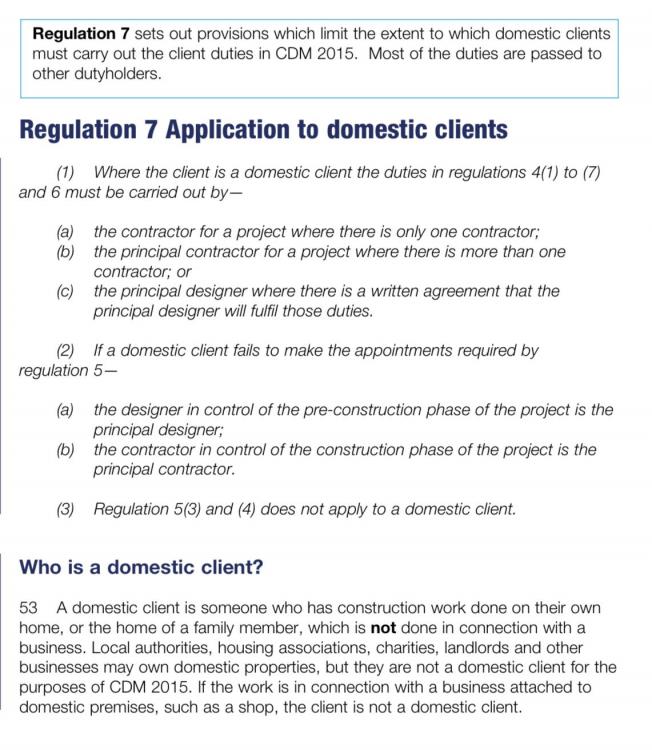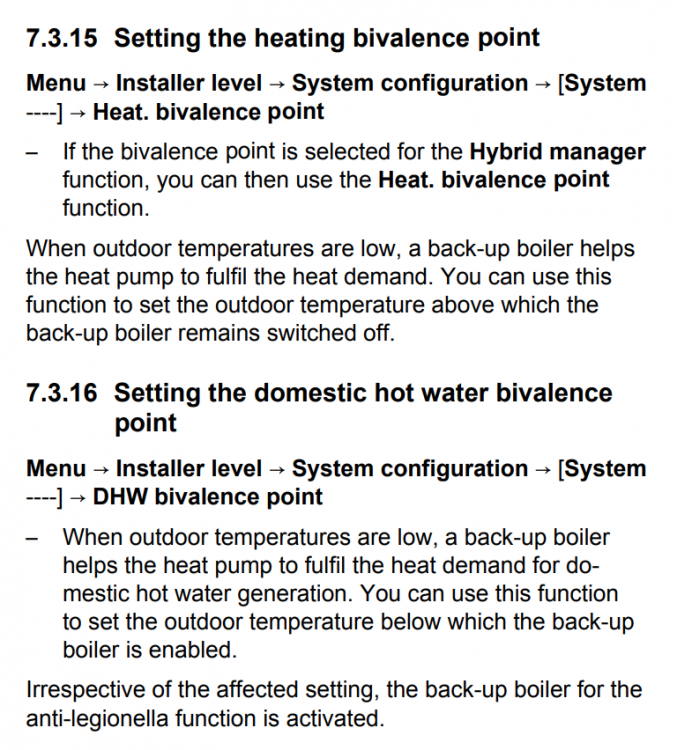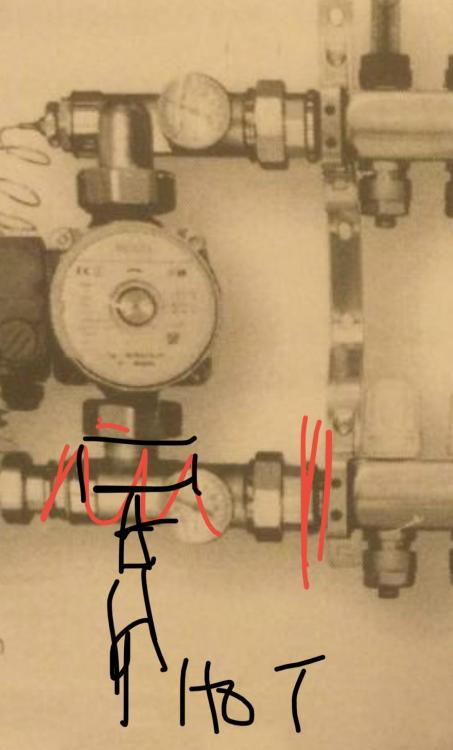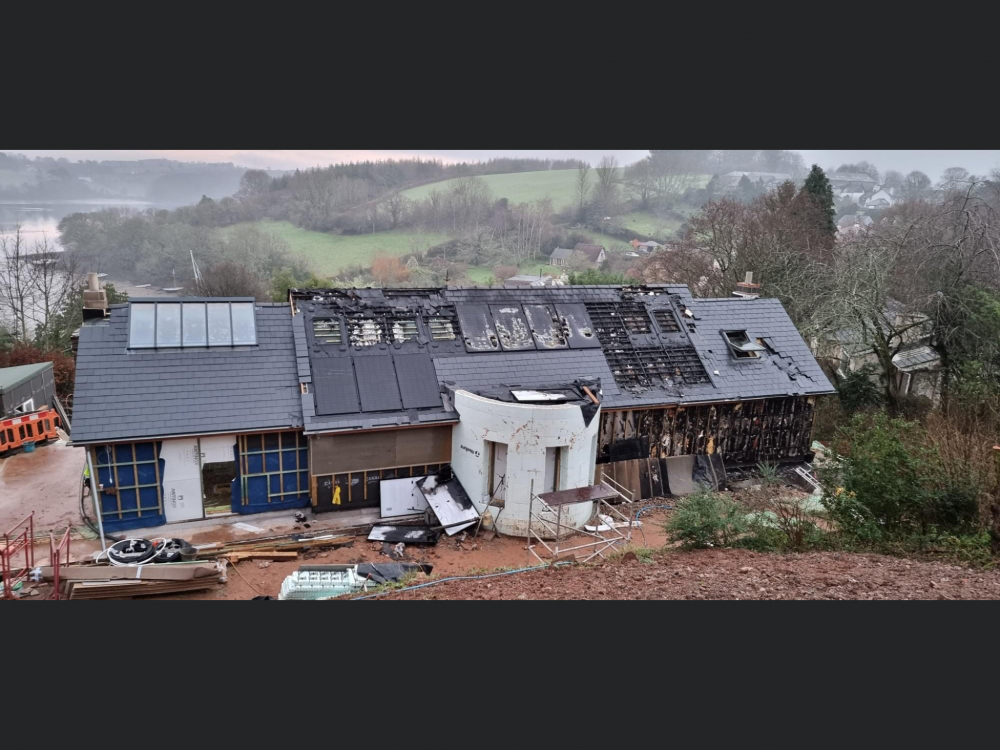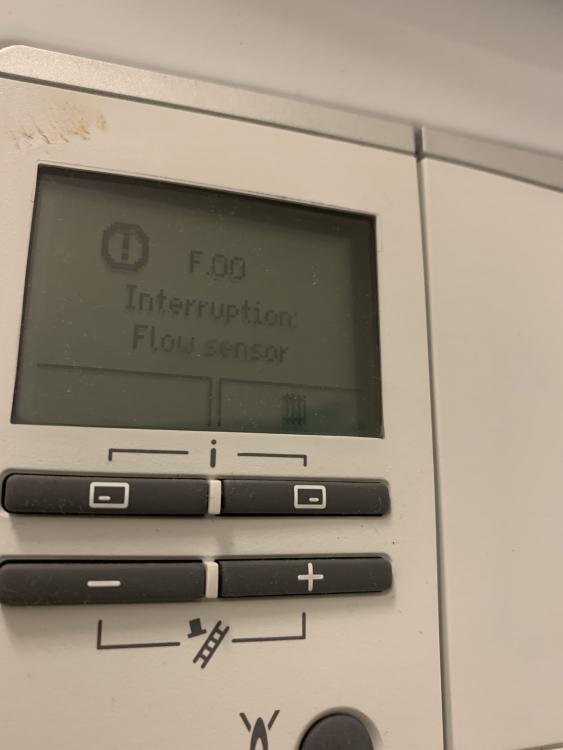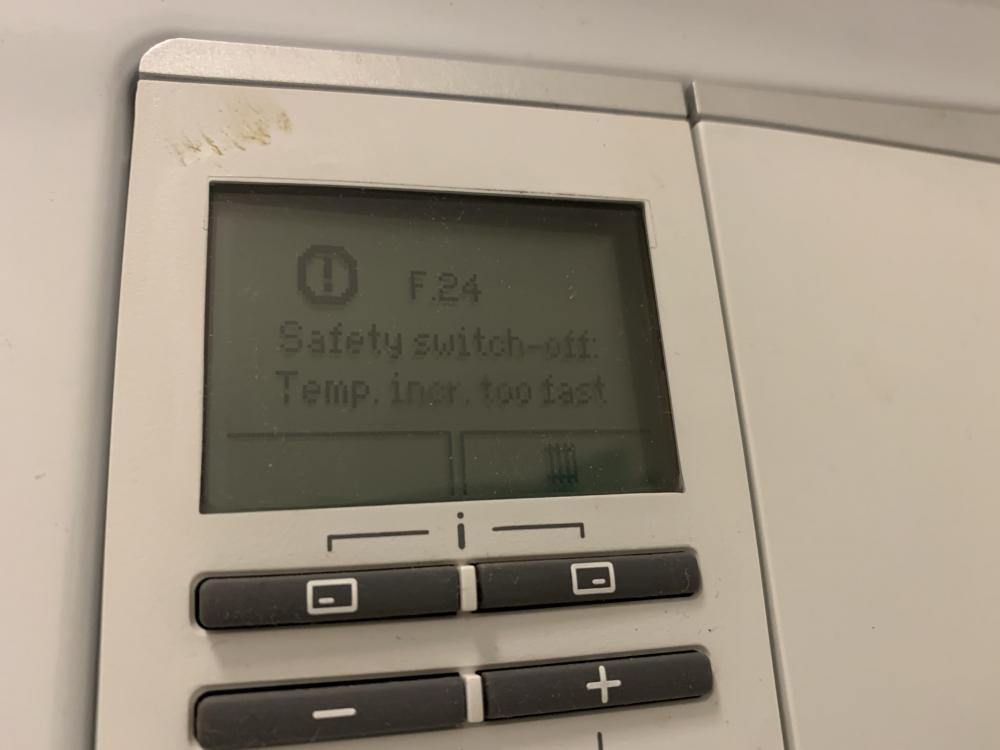Leaderboard
Popular Content
Showing content with the highest reputation on 01/18/22 in all areas
-
I admit I only know big jobs or my own diy. I always tried to keep trades apart however big the job. Groundworkers should not have steelworkers chasing along behind them etc. Steelworkers driving into groundworkers excavations that weren't there earlier, and groundworkers having to worry about stuff falling. It is very much easier to manage that way and the risks are much reduced. Once indoors the risks are very much lower. I recommend that to all self-builders. I worked as a specialist subcontractor on a few projects (for national companies) and they were awful: lots of procedures and signatures and stickers, but no real control and not nice sites to be on. HSE knew that and praised my readable and relevant risk assessments while criticising the main contractors' multiple folders of words. Paperwork is not the answer in itself. Common sense and thought is, but if you can't write it down, it hasn't been thought through.3 points
-
I filled out an f10 after the builders who did my superstructure and made sure my insurers knew I am now taking on subbies. Their H & S was shocking, I had nightmares. I regularly fill out Risk Assessments to make sure there is a paper trail. I updated my First Aid certificate, got plenty of first aid kit and a fire extinguisher and the relevant signage, including a covid policy. You will find compliance is the main issue. I remind them to think of PPE like a condom: it won't work in the cupboard. Makes them laugh and makes the point.2 points
-
Some good comments here already. I've added a brief 2p worth. As a self-builder you will take on the role as Principal Contractor when you are employing contractors. If there is no Principal Designer, you will also need to fulfil their obligations as well as Client duties. The regulations are well explained in L153 (https://www.hse.gov.uk/pubns/priced/l153.pdf) but not all are entirely relevant to a self-builder. Do you have any other designers? You should ask them for any residual, non-obvious hazards in their design. For example, the weight of steelwork so the contractor can plan ahead and get a dolly or crane. Or the depth of any excavations and what the likely soil conditions will be. That information needs to be given to the relevant contractors. You need to think about whether any hazardous designs can be changed, or how they may be controlled/managed - however the actual implementation of those controls will remain with the contractor doing the work. As a Principal Contractor, you are responsible for good order of the site, site welfare and co-ordination of contractors. There is a supervisory role but conduct of workers primarily sits with each contractor. Presumably you won't know the detail of contractors activities, so this is where asking for their risk assessments and method statements will come in. If they hand in a pile of rubbish, it is incumbent on you to challenge their procedures and whether they have the necessary skills, knowledge and experience. A client also has duties, in short they need to enable the project to be completed safely, with adequate time and resources and anyone they appoint is competent. As this is your own home you can stay as a domestic client. It is only when you step into the realm of design and managing contractors where you have to wear the other hats. It may be worth appointing a health and safety adviser for this project to be on hand to review anything you are unfamiliar with.2 points
-
Whilst our quarts are 25 mil I was.concerned about cracking when I tightened the clips So I used a thin line of silicone to sit the hob on and it’s been fine2 points
-
And if you are going to run a big load on an extension reel, then FULLY UNWIND the reel first or it will turn to a melted mass of plastic on the drum.2 points
-
HSE do not have a role in self build and you are not required to register for CDM2015 ! And in the event you do, and you have an incident on site even if you are 500 miles away you may find yourself on the end of criminal proceedings that are entirely not your fault. The majority of Self Build Insurance products do not cover you for being a Principle Contractor under CDM2015 - registering yourself as such would need you to take additional insurance products that you will find eye watering in price.2 points
-
If you have a smart phone, download CDM regulations App and there is a H&S form to fill in. Takes 20mins. You are then the Principal contractor.2 points
-
Agree with both LA3222 and Peter, it’s a cop out and trying to pass the book. if multiple trades on site then someone is the coordinator (you), but it’s much easier to keep the heavy risk big items and trades separate and make them responsible for themselves. H&S is (should be) common sense and easily managed on a small site. If it looks risky, how could it be made safer? … risk assessment.2 points
-
It’s fairly easy to mitigate. Make the ground worker the principle contractor for that phase, have no one else on site and tell them that (in writing) all site safety is their responsibility during that phase of the project.2 points
-
Don't pay for that shite. Search for CDM regulations on here, it is a topic that has been done to death and is a very grey area. You can ask three people and get three different interpretations. You will find that most on here didn't have a designated principle designor etc. they just cracked on as a self builder and did their best to ensure the site was safe, facilities provided such as a portaloo etc. If you pay someone it will likely become very expensive for little tangible output/effect on your build.2 points
-
There isn't one, it's just prissy tarts wanting to push boundaries. Like awkward clients who are never happy and just complain because they can. Live with it. Literally. Buy Aico, follow the instructions, fit and live should the worst happen.2 points
-
If your 76 years old I would put 10 grand aside to cover your gas bill and spend the rest of your money going on holiday, sod the insulation.2 points
-
This insurance stuff feels broadly correct in that you have handed the build to them and until it is signed off they are responsible for the building site - which is not a dwelling. You might look at ending the contract early so you get the house back but you may need to pay for that and you would then need some sort of insurance yourself. You may be able to live in a caravan on the site however as you could agree to partition that section off.1 point
-
sorry but this is wrong. And you need to read and understand the domestic client element of CDM2015 - in fact if you don’t appoint as per regulation 5 then the architect becomes principal designer by default, and each stage contractor becomes principal contractor. It is clearly noted in regulation 7. Appendix 6 also refers It is also worth noting since it’s inception in 2015, there have been no instances of the HSE prosecuting relating to CDM2015 and self builders failing to notify or act according to the regulations.1 point
-
1 point
-
That's usually the case for compressor dehumidifiers. If you get a desiccant dehumidifier it will work down to 1 degree C and pretty much extract the same amount of moisture from the air. It will require more juice than the compressor version as it has a small heating element to work with the dessicant, but in many instances this is a benefit as it can slightly warm the space. At above 10C then a compressor version is definitely the choice.1 point
-
1 point
-
Hi Ady, What's your 'Heat bivalence point' set to? Might want to make sure it's set to -20 if you've got no backup heating system.1 point
-
We bought three £100 dehumidifiers from screwfix and hired two "commercial" ones from local firm. The cheapies were extracting as much as the commercial ones so sent them back and bought two more 12l Screwfix ones. They work brilliantly and only a couple hundred watts so you can have multiple off the one extension. At the start they were drying about 25l a day between them. Now, it's more like 10l now that we've dried out. I know from searching gumtree, we'll be able to sell them on for £80 each. Bargain.1 point
-
Right. Leave the top connection as is, remove the bottom pump connection and the manifold connection and blank the manifold where the red lines are. Then use a standard pump valve to connect the hot from your new valve to the pump, remove the other valve from the other end of the manifold (one with a white cap) and then return that to the buffer.1 point
-
Could a custom clip be 3D printed? You sketch it I'll print it. Or is it that the hob projects too far down and hits the cutlery draw?1 point
-
The, relatively cheap, AEG hobs that we installed recently claim that they can be installed in a 12mm work surface. The gubbins project 44mm below the top though and they still ask for 60mm clearance above a drawer. They don't have that sort of clamp, they use spring clips that push against the edge of the work surface so it's an interference fit.1 point
-
There's always a smart arse, and today it's my turn! In the interests of there being no false information on the internet, I have to mention that the current won't increase as a consequence of using a long extension lead. It will be reduced. What has been assumed is that the power will remain constant. It won't, not for dumb resistive loads like these heaters. At 240V this total resistance looks like V/I or 240/16.66 = 14.4 Ohms. This resistance will remain constant, so at 220V the current would drop to 220/14.4 = 15.27A and the power would drop to 220x15.27 = 3361W Of course we would have to take into account the resistance of the cable that's causing the 20 volt drop, something like 20/15 = 1.33 Ohms and this would dissipate 300W of its own which is the real reason this would be a very bad idea! I hate myself now.1 point
-
I've tried heat & dehumidifier strategy before and it was dissappointing. Better off not heating the air at all. Overall, you'd be much better served by using fans to create plentiful airflow especially if there's a big void for the staircase and supplementing this with a dehumidifier if needs be.1 point
-
Ok so they think their mixer isn’t up to it. And I don’t like those so I would do something really simple here. Remove the heads, and then mount the pump direct to the manifold (think these are 1 1/2”) and then from the return line remove the other end, blanking off the manifold so the flow goes back to the buffer. Then put one of these in the flow - to blend the correct temperature - and use this to control the flow into the floor.1 point
-
Not sure how it is calculated, probably in BS 7671 somewhere. Reason it is 13A is so that a 3 kW load, like a kettle, can be used for a short time. Most 3 kW domestic stuff is usually 2.8 kW, which is 12.2A. So a little safety margin built in. I also suspect that if you tried to start a loaded 3 kW motor, the fuse would blow.1 point
-
I’ve heard a few people say their hobs cause thin quartz to vibrate so this sounds like an ideal fix. mine isn’t clipped either but didn’t silicon as tops are oak1 point
-
You could use a pipe stat, close to the pump. Set at say 45 degrees and wire the pump live through the normally closed connects. If the flow temp goes above where it is likely to cause an issue the pump gets switched off.1 point
-
PeterW, I'm not sure it is that simple. But the explanation is far from clear. https://selfbuildportal.org.uk/healthandsafety/ read all for context but The self builder acts as their own project manager, employing individual trades at different times.............the self builder will in effect become a contractor. In this case the HSE will expect self builders to demonstrate sufficient health and safety capability to meet the requirements of Part 4 of CDM 2015. Individual contractors will be expected to be able to advise the self builder on any specialist matters within their own work activities. The expectation on a self builder in this position will be on co-ordination and management , not on direct supervision of contractors on site. The self builder is entitled to expect contractors to plan, manage and monitor their own work in compliance with the CDM Regulations. So in principle the client is the Principal Contractor, and should follow the principle of putting all contractors in charge of their own works. That is how I read it anyway.1 point
-
that is a damn good idea! I will speak to my sparky about this. I think we're still about 4 - 6 weeks away from starting 1st fix, the bloody insulating is taking me bloody ages. ?1 point
-
But not by much. I suspect old sockets with weak contact springs might be more of an issue for overheating. I probably wouldn't leave everything running while you are all out.1 point
-
1 point
-
That is not correct - there has to be someone competent in charge and a self build client is not that person unless they are a construction professional and hold the correct qualifications and insurance. Pass the risk to the contractors - they have a duty of care at that point for H&S.1 point
-
1 point
-
1 point
-
cancel your fitters for a week at least, your asking for trouble, I couldn’t walk on mine for 3 days, then I covered it to stop damage, it was still green 4-5 days after laying.1 point
-
1 point
-
Are you heating it from gas boiler, ASHP, oil, direct electric, other? I think for 2 ppl in a space constrained situation, if you're doing sunamp at all the only sensible choice would be to get the largest sunamp you can and forgo the cylinder. The only drawback of that is if you're hoping to charge it from ASHP, but you have that issue anyway. Alternatively, if you're not using ASHP (or can compliment it with anything else), the easiest way is to increase capacity of a UVC is to increase the storage temperature. E.g. you can store water at 50 deg C most the time, but bump it up to 85 on the days when you know you need more. We do this with ASHP and the immersion heater as a boost to get above 55 deg C. (I have it all automated, so the more people staying in the house overnight, the hotter the tank is in the morning, charged up from overnight cheaprate electric). In case it's not obvious, this depends on having thermostatic mixer on the outlet / all showers, so that a constant temp is delivered, but using less DHW from the tank if t's at a higher temp, thereby achieving a larger effective heat energy store. You can't do this with Sunamp, hence why UVC is strictly better for "variable storage" requirements. btw if you mostly use DHW for showers, you can reduce their demand by about 35% by installing a showersave.com device. Also if you're having a boiling water tap in the kitchen you can consider getting one with an integrated instant DHW supply (e.g. Quooker Combi) which also reduces demand on the main tank1 point
-
How did building control let you move in without fire alarms? Or maybe my builder is telling me porkies. He says his insurance would be invalidated if he let me move in without a building control certificate.1 point
-
What's to stop you cutting some of the rubble back to square it up and create enough space for a decent thickness insulation backed plasterboard circa 40mm?1 point
-
1 point
-
You don't notice them after a week in the house and it's all furnished, too much other stuff for your eyes to see. Spend thousands, if you need to, but I went with Aico and didn't.1 point
-
I would just fit the Aico ones. They are reliable and decent value. Get the mains lithium ones. Nobody will notice whatever the aesthetic thing with the lights is supposed to achieve.1 point
-
And if they were to choose to measure form where the ground is lower, then a bit of landscaping could resolve it. I have had such complaints/queries and it went away quickly, as it must have been a neighbour complaining but without any knowledge/figures/ clue...just higher than they liked. Planner keen to sign it off.1 point
-
I have a 200m2 basement with big cinema, gym, games room and plant room. All has underfloor heating but it’s never been used. The MVHR provides supplemental heating and its always around 22 degrees. My walls are insulated 150mm think but nothing under the slab to allow any ground heat to transfer into the bst slab.1 point
-
Welcome If the couple in the CGI are representative of you then well done! Most of us are late middle age and many are coffin dodgers. A great looking house.1 point
-
New house looks fantastic. Now you have just got to build it. Best of luck, and welcome.1 point
-
1 point
-
No trellis configurations needed, but if it is a vaulted roof you will need a restraint strap at the top end to prevent joists sliding away from the wall.1 point
-
you can make one out of a small 250mm inspection chamber, the linear drains dump into it (the outlet is higher than the bottom so the silt can collect). then every couple months take the lid off and clean it out. ready built larger one to give you an idea. https://www.plasticdrainage.co.uk/600mm-catchpit-silt-trap-for-en1401-upvc-drainage-pipe.html1 point








